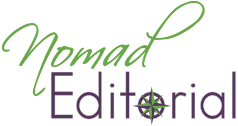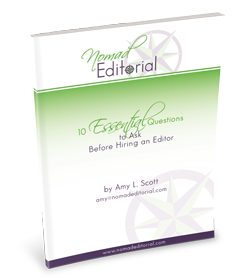This is a post I first wrote when I was participating in, and then cohosting, a nonfiction offshoot of NaNoWriMo called Contentpalooza, but it applies to editing any of your own writing.
When you edit your writing (or have someone else do it for you), you’re doing your readers a favor.
You’re making sure you can offer them a clean, concise, organized piece of writing that they don’t have to work too hard to understand. Readers shouldn’t have to decipher your message or figure out what the heck you are trying to say. (That’s the editor’s job, if it’s anyone’s.) I have a crazy knack for figuring out what people are really trying to say, and helping them rephrase in a more concise way that still sounds like them, and I enjoy doing it—but not everyone feels that way, especially if they’ve paid for the content!
Writing without letting your internal editor come out to play, whether you’re free writing on your own or trying to complete a crazy challenge like NaNoWriMo, is both challenging and liberating—and it guarantees that your writing will be even messier than usual. Extra words, ridiculous typos, and other things you wouldn’t normally let slide will creep into your writing. It’s difficult to go back through later and pick them all out; you’re bound to miss something. Here are some tips on how to go from mess to masterpiece.
1. Get some distance. If at all possible, wait at least a few days before you go back to edit and revise what you’ve written. However, if you wait too long, you might forget what the heck you were talking about!
2. Determine the overarching theme of your blog post, book, etc., then start to organize the content (it’s unlikely it landed on the page in exactly the right order).
3. Run spell check—with the full awareness that it won’t catch everything.
4. Read through the content again. Reading it out loud often makes it easier to find mistakes. You can also try changing the font or printing it out and reading it again. Separating out contractions when you read can help you find easy-to-miss mistakes like your/you’re (if you wrote you’re, read it as “you are” and see if that’s the correct phrase for the context).
5. Have someone else take a look; fresh eyes often see things you missed.
Once you’ve done as much as you can to edit your own writing, the next step is to hire a professional editor. Click here to find out more about my services, or contact me to talk about your project.

